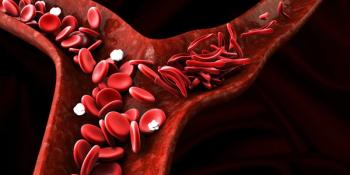
Study: Prevention Strategies Needed for Non-Ventilator-Associated Hospital-Acquired Pneumonia
Study findings suggest surveillance and prevention programs are needed for this common and deadly complication of hospitalization.
Non-ventilator-associated hospital-acquired pneumonia (NV-HAP) is a common and deadly complication of hospitalization that could account for up to 1 in 14 hospital deaths, according to a study published in JAMA Network Open. As the most common health care-associated infection in the United States, hospital-acquired pneumonia is associated with high morbidity, mortality, and health care use.
Despite most cases of hospital-acquired pneumonia occurring in nonventilated patients, there is often only surveillance and prevention programs for ventilator-associated pneumonia and not NV-HAP at most hospitals. Further, limited understanding of the burden and preventability of NV-HAP as well as difficulty defining and tracking NV-HAP contribute to hospitals’ limited attention to the infection.
To estimate the incidence, variability, outcomes, and population attributable mortality of NV-HAP, researchers conducted a retrospective cohort analysis of 284 hospitals using an electronic surveillance definition applied to detailed clinical data. The study included adult patients admitted to the Veterans Health Administration hospital from 2015 to 2020 and HCA Healthcare hospitals from 2018 to 2020.
In the data collected from 284 hospitals included in the study, investigators found that approximately 1 in 200 admissions met electronic surveillance criteria for a possible NV-HAP event, with 22% of these patients dying in-hospital. Further, the investigators found that another 8% were discharged to hospice, and only 38% were discharged directly home.
During the study, investigators measured NV-HAP incidence, length-of-stay, and crude inpatient mortality. In total, they found that there were 32,797 NV-HAP events (0.55 per 100 admissions [95% CI, 0.54-0.55] per 100 admissions and 0.96 per 1000 patient-days [95% CI, 0.95-0.97] per 1000 patient-days) 6,022,185 hospitalizations (median [IQR] age, 66 [54-75] years; 1 829 475 [26.1%] female).
Additionally, the investigators found that patients with NV-HAP had multiple comorbidities (median [IQR], 6 [4-7]), including congestive heart failure (9680 [29.5%]), neurologic conditions (8255 [25.2%]), chronic lung disease (6439 [19.6%]), and cancer (5,467 [16.7%]). Further, the crude inpatient mortality was 22.4% (7361 of 32 797) for NV-HAP vs 1.9% (115 530 of 6 022 185) for all hospitalizations; of these, 12,449 (8.0%) were discharged to hospice. Median [IQR] length-of-stay was 16 (11-26) days vs 4 (3-6) days. Pneumonia was also confirmed by reviewers or bedside clinicians in 202 of 250 patients (81%) on medical record review.
Ultimately, it was estimated that NV-HAP accounted for 7.3% (95% CI, 7.1%-7.5%) of all hospital deaths (total hospital population inpatient death risk of 1.87% with NV-HAP events included vs 1.73% with NV-HAP events excluded; risk ratio, 0.927; 95% CI, 0.925-0.929). Most instances of NV-HAP affected patients who were defined as clinically vulnerable; the median age of patients with NV-HAP was 69 years.
Most patients with NV-HAP events had multiple serious comorbidities, and one-fourth of NV-HAP events involved patients in intensive care units. To account for confounding by patients’ baseline status and severity of illness, investigators incorporated a rich array of clinical parameters into the analysis. Even after accounting for these factors, outcomes experienced by patients with NV-HAP remained worse than those without NV-HAP.
According to the study authors, high incidence and mortality rate associated with NV-HAP suggests it is an important hospital complication, warranting the development and testing of prevention programs.
“While there has been substantial work to date on defining best practices to prevent ventilator-associated pneumonia, there is very little consensus on how best to prevent NV-HAP,” study authors wrote. “Potential strategies include enhanced oral care, mobilizing patients, minimizing the use of acid suppressants, and applying dysphagia precautions.”
In this study, the investigators used manual medical record reviews or diagnosis codes to identify NV-HAP, which the study authors noted may be a potential source of bias due to variability criteria and diagnosis codes between hospitals and clinicians. The authors suggest that automated analyses of electronic clinical data may provide more consistent and efficient means to measure NV-HAP incidence and track the impact of prevention programs.
Overall, the findings of this study underscore the importance of developing and validating robust measurement tools to monitor NV-HAP incidence and the need to identify effective prevention strategies and assess the impact of prevention initiatives on patient and hospital-level outcomes, according to the study authors.
Reference
Jones BE, Sarvet AL, Ying J, et al. Incidence and Outcomes of Non–Ventilator-Associated Hospital-Acquired Pneumonia in 284 US Hospitals Using Electronic Surveillance Criteria. JAMA Netw Open. 2023;6(5):e2314185. doi:10.1001/jamanetworkopen.2023.14185
Newsletter
Stay informed on drug updates, treatment guidelines, and pharmacy practice trends—subscribe to Pharmacy Times for weekly clinical insights.



















































































































































































































